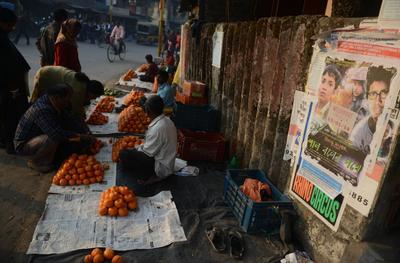In addition, a special cabinet committee has cleared about US$48.4 billion of delayed projects. Short-term measures have reduced the current account deficit (CAD) and stabilised the INR, reducing uncertainty for firms. The high CAD made the country more vulnerable to capital outflows whenever global risk aversion rose. Financing the CAD is no longer seen as a problem. Since India is a net oil importer, softer commodity prices are helping. More active political contestation after recent electoral reversals has energised the government to push through pending legislation, despite the few months remaining for the next round of elections. With improving fundamentals, the country is better placed to face what will be a gentler US taper.
But domestic demand remains weak, with most firms waiting for election results before committing to invest, even though a more growth friendly government is now expected to come to power. Since the government has displayed a serious resolve to restrain deficits, service growth will also be weak, since, government spending largely falls on non-traded goods. Sustained high consumer price inflation has vitiated consumer spending power. Sticky inflation prevents monetary policy from softening despite output growth that is much below its potential. As firms do not have much pricing power industrial inflation is low, so the real loan rates they face are high while savers get low or even negative rates of return because of high food and service price inflation. Both monetary and fiscal policies are constrained as a result.
To craft an appropriate policy response in 2014, the fundamental drivers of low growth and high food inflation need to be understood. These are a combination of external shocks and sectoral domestic bottlenecks.
India’s bottlenecks are many and complex. The collapse of manufacturing growth suggests there is no aggregate excess demand despite a high fiscal deficit and CAD. Consumer price inflation may be high but it does not imply the economy is overheating. Demand is in excess only for certain commodities where rigidities prevent an expansion in supply, while capital-outflow-driven rupee depreciation prevents imports from providing low-cost substitutes. The CAD was not the result of generalised excess demand. Rather, it arose because of inelastic demand for oil and gold. In the case of oil demand this occurs because of an absence of local mechanisms to pass through sharp international oil price shocks to domestic consumers. In the case of gold it comes about because of the absence of other inflation hedges.
Perhaps the area where India’s economy has suffered the most from external shocks is food price inflation. Since 2007, high and sustained food price inflation might be raising wages in a manner that is contributing to second-round effects of further price increases. Rural real wages that had been flat earlier showed a substantial rise after 2007 when high food inflation set in. Large government transfers to rural areas at this time also caused a rise in wages, and nominal wage growth far exceeded inflation.
Since there was some rise in productivity, the wage rise in itself did not sustain a further rise in prices — multiple supply shocks also contributed. These started with the international food price shocks of 2007 and 2008, the outflows and rupee depreciation associated with the global financial crises and then with the euro debt crisis, global liquidity driving up oil prices despite lower net demand, and the failure of the monsoon in 2009 — the only period global shocks had moderated.
Despite these issues, India’s economy has bottomed out, and its much higher long-term growth potential should assert itself after the elections. The international climate is less threatening and conditions are ripe for a cyclical upturn.
The good monsoon and some softening of the rate of growth of real rural wages also suggest food inflation may moderate. But for this to be sustained, agricultural marketing must be improved and the efficiency of supply chains reformed. Agricultural production is rising but these bottlenecks are keeping it from impacting prices. Reforms would enable better supply side responses to price changes by India’s agricultural sector. This would likely cause consumer price inflation to come down and with it, interest rates.
Other essential long-term measures are to improve government procedures and the ease of doing business. Better governance will reduce transaction costs, helping a wide range of activities, including growth in exports. With more literacy and awareness, and a larger middle class, democratic institutions are strengthening against poor governance and corruption. There is a demand for better public services. In a democracy with universal suffrage politicians have to focus on inclusion. This usefully puts limits on inequality. But recent polls show the electorate wants ‘active inclusion’ that improves jobs and productivity, rather than the old-style transfer-based measures. Better returns to education mean that all Indian children are now going to school, and aspirations for good jobs are rising. While anti-corruption movements have delayed decision-making and hurt growth in the short-term, they are good for India’s sustained long-term growth.
Ashima Goyal is Professor of Economics at the Indira Gandhi Institute of Development Research, Mumbai.

